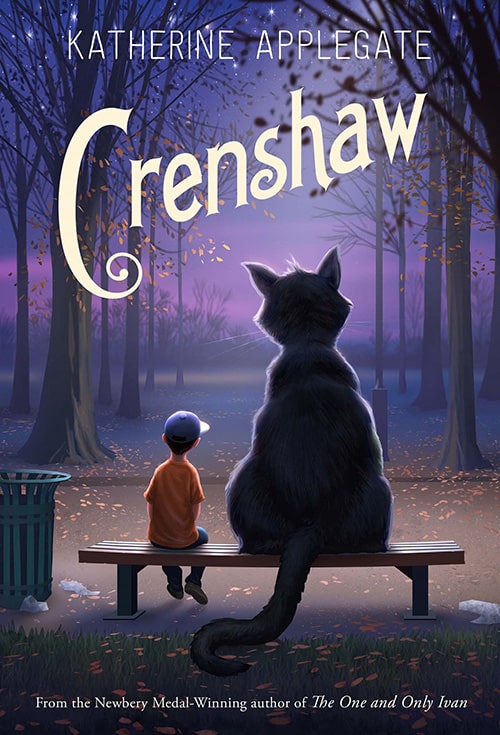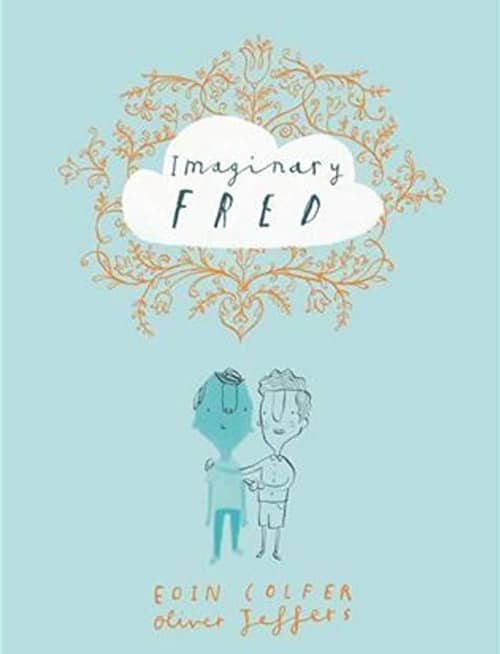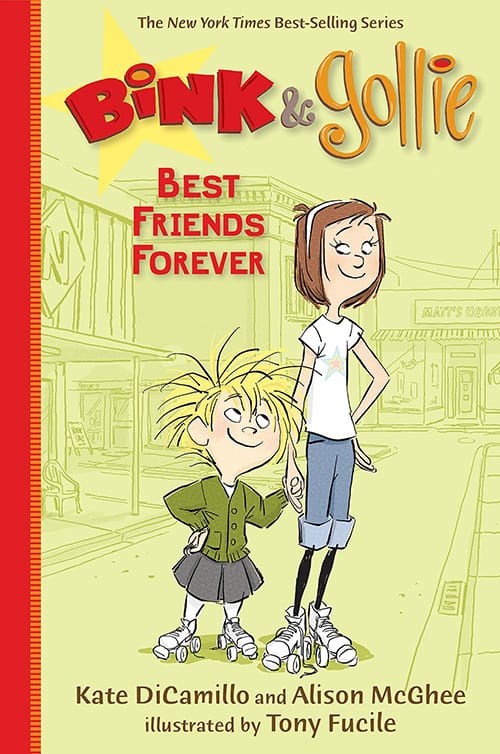In this month of Valentine’s Day let us celebrate friends – real and imaginary!

Suggested ages: 8-11 years
I love Katherine Applegate’s books! With a perceptive sense of truth mixed in with imaginative possibilities, she creates stories that reflect some of the hard realities children or even animals (think The One and Only Ivan) find themselves in. Crenshaw tells the story of 4th grader Jackson whose family moves in and out of homelessness. To help him navigate through his days, Jackson’s imaginary friend, Crenshaw, once again enters his life. Crenshaw is an imaginary cat who is a comforting and playful companion but who, at the same time, is forthright and unsentimental when accessing life.
Jackson finds that he wants his parents to be candid with him regarding what to expect day to day. Crenshaw, in turn, helps Jackson realize he needs to tell himself the truth – that , in a sense, he is in charge of who he is and how he meets the challenges of each day. Being a big brother to his younger sister, Robin, and developing a new friendship with Marisol in school both contribute to Jackson coping with the fabric of his life. Yes, life isn’t always fair so “just enjoy the magic while you can.” And being surrounded by people who love you helps make that magic possible.

Suggested ages: 5-8 years
Imaginary friends fill in the emptiness that loneliness creates and when the conditions are perfect, one might appear just when needed. Fred’s purpose in life was always to be there for a child who was in need of a companion. He took his job seriously, always trying to be the best imaginary friend possible. But the reality was that his friends eventually found real friends; then he could feel himself fading back into the sky. How he wished for a forever friend. Eventually, Sam – a perfect match – summoned him. The two had so much in common from a love of reading and music to the joy they found in creating plays and comic books.
One day, however, Fred sees a glow in Sam’s eyes after attending a party where he had met Sammi. Fred fears the worse as he notices his arm fading. But then, to his surprise, Sam introduces him not only to Sammi but also to Frieda, Sammi’s imaginary friend. Fred’s world expands and is filled with the joy of having a forever friend. Friendships can come in many forms!
Colfer’s amusingly imaginative story is a perfect match for Jeffers’ quirky, clever illustrations. The pages are filled with his simple black line drawings along with the colored pixilated representations of the two imaginary friends. Colfer and Jeffers make a perfect, creative team.

Suggested ages: 5-8 years
Blink and Gollie continue to rollerskate through their capers in this third installment of the Blink and Gollie beginning chapter books. As in the first Blink and Gollie book, which received the 2011 Theodor Seuss Geisel Award, the two are a contrast in appearance and demeanor. But, as true friends do, they eventually find growth and contentment through their differences. Their friendship is a messy one with comic action throughout. Young readers will delight in these tales from Gollie taking on airs when she suspects she has royal blood to Bink’s zany attempt to stretch out her short stature to Gollie’s height.
Fucile’s illustrations are an essential component of the plots, conveying as much as does the sparse text. The characters are expressively drawn in color, popping out against the black and white background. With simple strokes, there is no doubt as to Bink’s or Gollie’s emotions. DiCamillo, McGhee and Fucile successfully partner to create a series that is sure to be a hit with young readers.